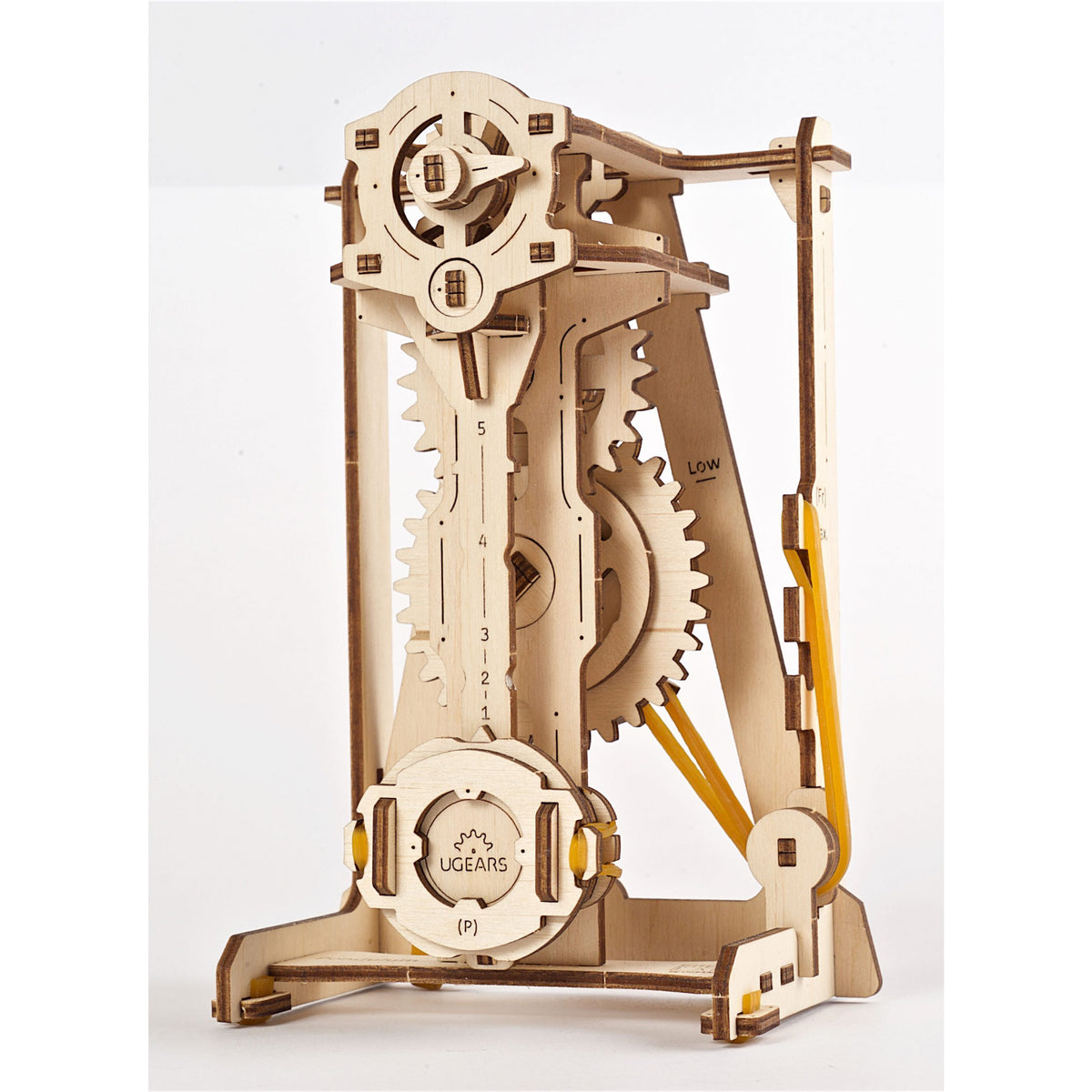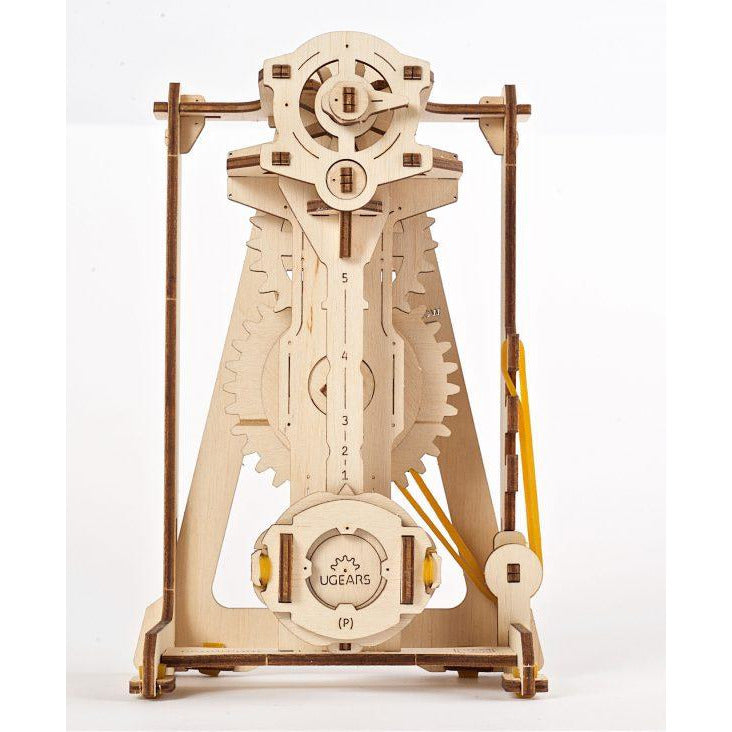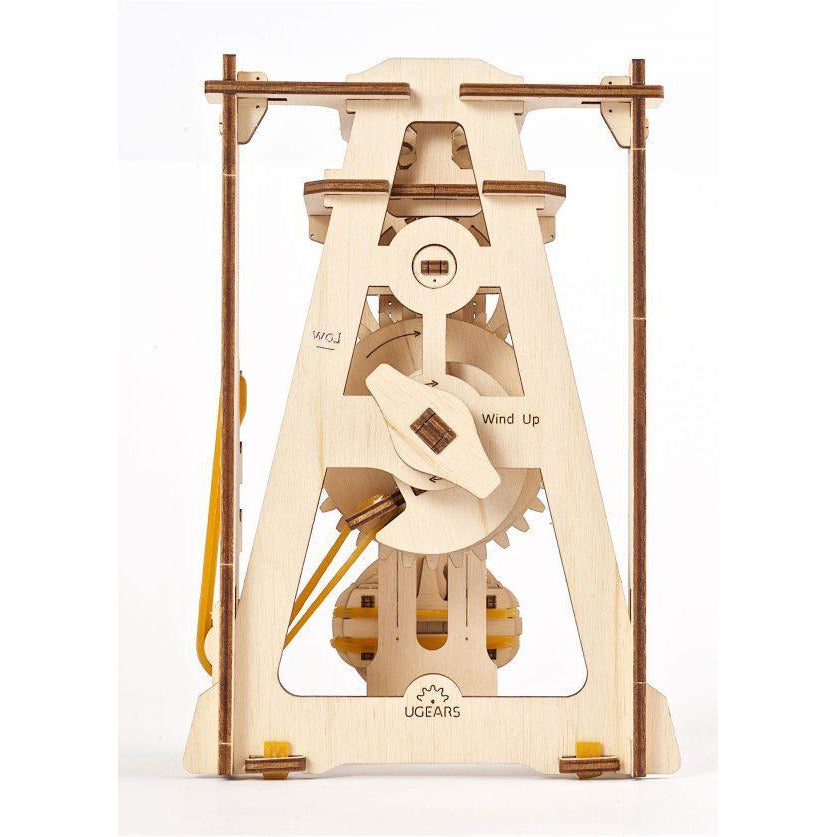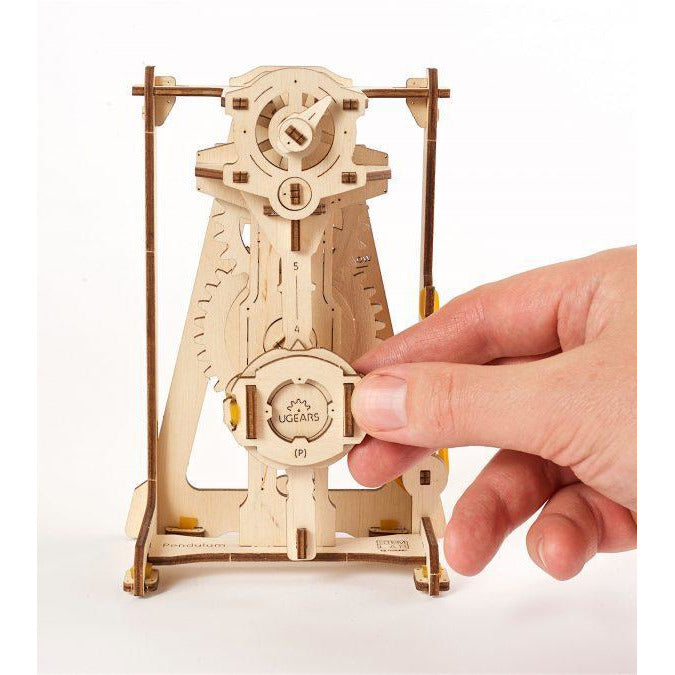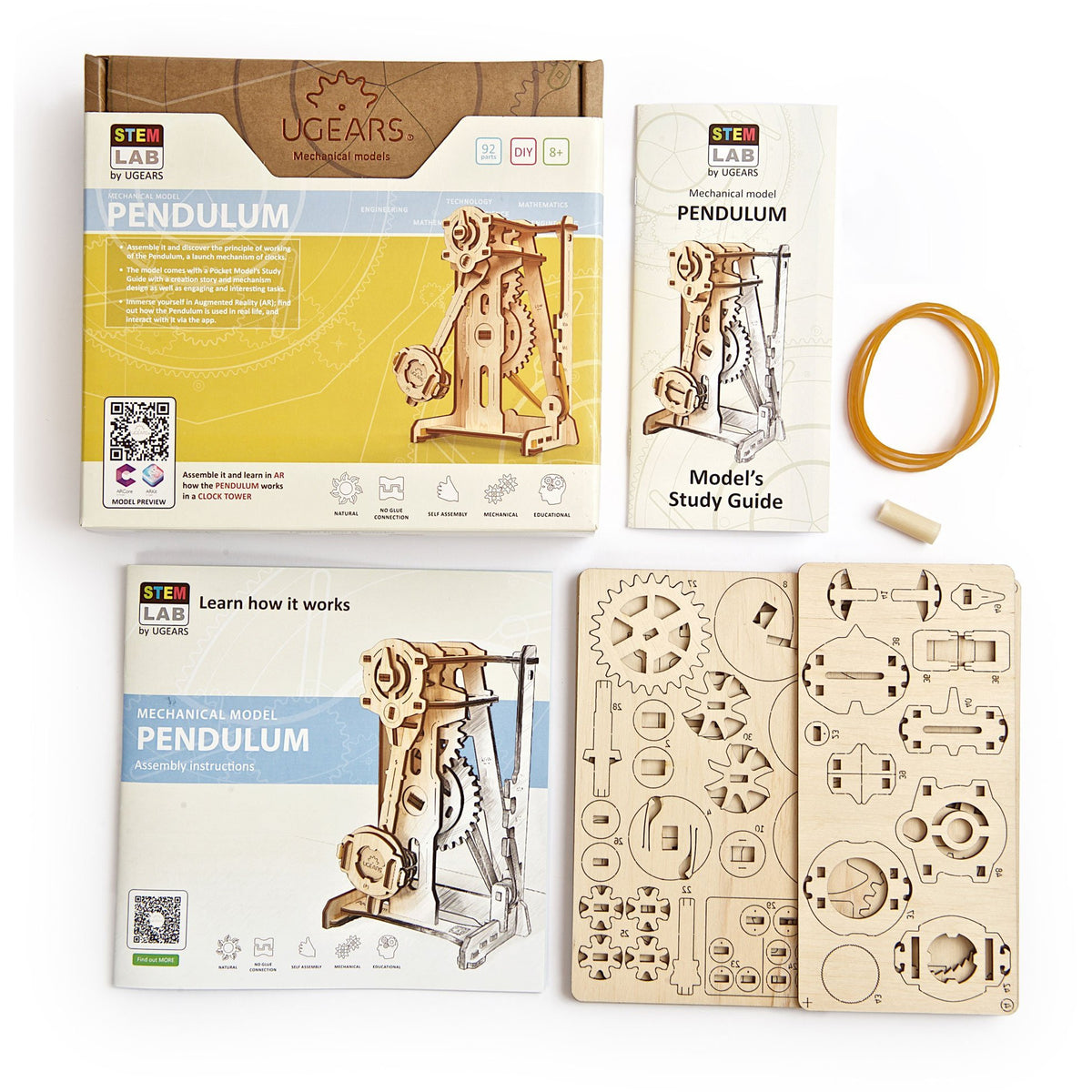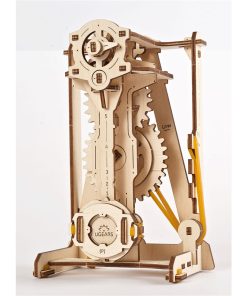UGEARS Stem Lab Pendulum UGEARS
$ 45,99 $ 27,59
UGEARS STEM LAB PENDULUM
Model Size: 11.5*8.3*16.7 cm
Number of components: 92
Estimated time of assembly: 1-2 hour
Assemble it and discover the principle of a working Pendulum.
- Experiment: the model comes with a QR Code to download an interactive Pocket Model Study Guide which includes engaging and interesting tasks to learn more about the Pendulum.
- Immerse yourself in Augmented Reality (AR), find out how the Pendulum is used in a clock mechanism, and interact with it via the dedicated Ugears application.
The mechanism of the Pendulum is composed of:
- Escapement wheel
- Needle indicator
- The pendulum with the anchor
- Pendulum bob
Learn how the PENDULUM works
The Pendulum is an interactive puzzle kit to help learn and better understanding the common element in mechanical clocks.
The pendulum is one of the basic and most reliable time measuring mechanisms. Its working principle is based on the model’s constant amplitude oscillation under the force of gravity (weight) and potential energy (tension force) of the rubber band. The rubber band powers the mechanism of the model and compensates for the pendulum’s oscillations’ kinetic energy loss.
The model has an anchor escapement controlling the frequency of oscillations, a weight, a scape-wheel, gearing, rubber band, ratchet, and pawl reducing operation error. The model has several means to control the frequency of oscillations: the weight of the pendulum bob, the vertical position of the weight on the pendulum, and the tension of the rubber band.
When and who invented it
The first study of the pendulum was implemented by Galileo Galilei, an Italian engineer in the end of the 16th century. He described the property of the pendulum to preserve the consistency of the oscillations. The first person to use a pendulum in a mechanical clock and ensure a steady rate was a Dutch physicist Christiaan Huygens back in the 17th century.
Usage
Pendulums are mainly used in mechanical clocks as an element of a launch mechanism and the way to provide a steady rate. In the musical sphere, metronomes that have pendulums as their chief constructional element, help musicians practice playing to a regular tempo. Pendulums are also used in geological surveying, seismography, sports, and laboratory research in mechanics and physics.
The Pendulum is developed to serve as a learning tool not just a puzzle.
Just like all the Ugear’s collections, putting STEM-lab models together is fun and comprehensive: everything you need to build, learn, and discover comes in a box including:
- High-quality wooden boards with pre-cut details and other standard supplies. Assembly requires no glue or additional tools. The details come out of the boards with a slight push.
- Detailed step-by-step colour instruction manual. Easy to follow – easy to learn.
- Examples and suggestions for your fun hands-on projects.
- QR-code to Pocket Model’s Study Guide (the Pendulum Essentials with a description of the mechanism, principle of working, main characteristics, definitions, and formulas).
- QR-code to Ugears AR Application. New exciting features from Ugears to make your learning experience even more fascinating!
Quick Shipping and Professional Packaging
Due to our long-term partnership in a long-standing partnership with UPS, FedEx, DHL and many other leading global carriers, we are able to offer an array of shipping options. Our warehouse staff are highly trained and will pack your products according to our precise and precise specifications. Your items will undergo a thorough inspection and be securely secured prior to being delivered. We ship to thousands clients each day across multiple countries. This is an indication of our dedication to being the biggest online retailer in the world. The warehouses are located in Europe as much as they are in the USA.
Note: Orders that include more than one item are assigned a processing time in accordance with the item.
Prior to shipment before shipping, we'll inspect thoroughly the items you've ordered. The majority of orders are shipped within 48 hrs. The time to deliver varies from 3-7 days.
Returns
We don't manage the stock in our warehouse and factory. Stocks are subject to change at any moment. You may not receive your order after the order has been made.
Our policy is for 30 days. If you have passed 30 days by since your purchase, unfortunately we can't offer you a refund or exchange.
The item cannot be used and in its original condition. It should also be in the original packaging.
Related products
RADIO CONTROL
RADIO CONTROL
RADIO CONTROL
RADIO CONTROL
RADIO CONTROL
RADIO CONTROL
RADIO CONTROL
RADIO CONTROL
(Clearance Item) HB RACING 5 Cell Main Chassis 2.5mm with Battery Tray (Cyclone) HB RACING
RADIO CONTROL
RADIO CONTROL
(Clearance Item) HB RACING 44mm Heavy Duty Universal Drive Shaft/Rear/Steel/2Pcs HB RACING
RADIO CONTROL
RADIO CONTROL
RADIO CONTROL
RADIO CONTROL
RADIO CONTROL
RADIO CONTROL
